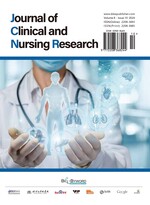Abstract
This study isolated and purified strain 431 from an animal probiotic product. Through staining and microscopic examination, colony morphology analysis, biochemical reaction tests, and 16S rDNA sequence alignment, the strain was identified and named Brevibacterium aureus 431. The study focused on the production of biosurfactants by strain 431, and antibacterial activity tests were conducted on the strain and its secondary metabolites. The results showed that strain 431 exhibited no resistance to 10 commonly used drugs, and its concentrated secondary metabolites were highly sensitive to the indicator bacterium Escherichia coli. Oral administration of strain 431 to BALB/c mice resulted in normal mental state, diet, and bowel movements, with no signs of illness or death, indicating that strain 431 is highly safe and non-pathogenic to mice. The study suggests that Brevibacterium aureus 431 has significant research value as a new source of actinomycetes and that its secondary metabolites have potential application value in the development of antibacterial drugs.
References
Wang LL, Xu JX, 2021, Challenges and Countermeasures Faced by the Breeding Industry After the Implementation of the Feed “Prohibition Order.” China Animal Health, 23(9): 3, 5.
Bartkiene E, Ruzauskas M, Bartkevics V, et al., 2020, Study of the Antibiotic Residues in Poultry Meat in Some of the EU Countries and Selection of the Best Compositions of Lactic Acid Bacteria and Essential Oils Against Salmonella enterica. Poult Sci, 99(8): 4065–4076.
Ding XL, Zheng WC, Liu JH, et al., 2023, The Control Effect of Different Compound Microecosystems Against Chicken Coccidiosis. Chinese Journal of Animal and Infectious Diseases, (2023): 1–10.
Zhang L, Li YL, Lou YW, et al., 2023, Effects of Different Microecosystems on Growth Performance, Meat Quality and Fecal Flora in Pigs. Feed research, 2023(13): 28–33.
Wang LH, Zhang WJ, 2023, Effects of Diet Added Microecology on Reproductive Performance and Immune Function of Sows. Chinese Feed, 2023(10): 34–37.
Wen SP, Dou YF, 2018, Research and Application of Microecological Agents in Animal Husbandry. Modern Animal Husbandry Science and Technology, 2018(8): 27.
Dai W, Ban B, Fang RJ, 2020, Mechanism of Microecosystem Preparation and Its Application in Livestock Production. Hunan Feed, 2020(3): 30–32.
Dash HR, Mangwani N, Chakraborty J, et al., 2013, Marine Bacteria: Potential Candidates for Enhanced Bioremediation. Appl Microbiol Biotechnol, 97(2): 561–571.
Ibrahim SA, Al Saryi N, Hetta HF, et al., 2018, Marine Brevibacterium aureum Extract and Its Constituent’s Saphenic Acid a Derivative of 1-Phenazinecarboxylic Acid (Tubermycin B), Initiate Apoptosis via Inhibition of NF-κB and MAPK Expression. Toxicology and Environmental Health Sciences, 10(5): 321–329.
De Carvalho CC, Fernandes P, 2010, Production of Metabolites as Bacterial Responses to the Marine Environment. Mar Drugs, 8(3): 705–727.
Oves MNF, 2016, Red Sea Microbial Diversity for Antimicrobial and Anticancer Agents. Journal of Molecular Biomarkers & Diagnosis, 7(1): 1000267J.
Salam N, Jiao JY, Zhang XT, et al., 2020, Update on the Classification of Higher Ranks in the Phylum Actinobacteria. Int J Syst Evol Microbiol, 70(2): 1331–1355.
Chen P, Zhang L, Wang J, et al., 2016, Brevibacterium sediminis sp. nov., Isolated from Deep-Sea Sediments from the Carlsberg and Southwest Indian Ridges. Int J Syst Evol Microbiol, 66(12): 5268–5274.
Cui Y, Kang M, Woo S, et al., 2013, Brevibacterium daeguense sp. nov., a Nitrate-Reducing Bacterium Isolated from a 4-Chlorophenol Enrichment Culture. International Journal of Systematic and Evolutionary Microbiology, 63(Pt 1): 152.
Komagata K, Iizuka H, 1964, New Species of Brevibacterium Isolated from Rice. J Agric Chem Soc Jpn, (38): 496–502.
Roux V, Raoult D, 2009, Brevibacterium massiliense sp. nov., Isolated from a Human Ankle Discharge. Int J Syst Evol Microbiol, 59(Pt 8): 1960–1964.
Bhadra B, Raghukumar C, Pindi PK, et al., 2008, Brevibacterium oceani sp. nov., Isolated from Deep-Sea Sediment of the Chagos Trench, Indian Ocean. Int J Syst Evol Microbiol, 58(Pt 1): 57–60.
Lee SD, 2006, Brevibacterium samyangense sp. nov., an Actinomycete Isolated from a Beach Sediment. Int J Syst Evol Microbiol, 56(Pt 8): 1889–1892.
Pei S, Xie F, Niu S, et al., 2020, Brevibacterium profundi sp. nov., Isolated from Deep-Sea Sediment of the Western Pacific Ocean. Int J Syst Evol Microbiol, 70(11): 5818–5823.
Chen S, Dong YH, Chang C, et al., 2013, Characterization of a Novel Cyfluthrin-Degrading Bacterial Strain Brevibacterium aureum and Its Biochemical Degradation Pathway. Bioresour Technol, (132): 16–23.
Rodrigues L, Teixeira J, Oliveira R, et al., 2006, Response Surface Optimization of the Medium Components for the Production of Biosurfactants by Probiotic Bacteria. Process Biochemistry (1991), 41(1): 1–10.
Moldes AB, Torrado AM, Barral MT, et al., 2007, Evaluation of Biosurfactant Production from Various Agricultural Residues by Lactobacillus pentosus. J Agric Food Chem, 55(11): 4481–4486.
Hajfarajollah H, Eslami P, Mokhtarani B, et al., 2018, Biosurfactants from Probiotic Bacteria: A Review. Biotechnol Appl Biochem, 65(6): 768–783.
Hu X, Wang C, Wang P., 2015, Optimization and Characterization of Biosurfactant Production from Marine Vibrio sp. Strain 3B-2. Front Microbiol, (6): 976.
Sharma D, Saharan BS, 2016, Functional Characterization of Biomedical Potential of Biosurfactant Produced by Lactobacillus helveticus. Biotechnol Rep (Amst), (11): 27–35.
Seghal KG, Anto TT, Selvin J, et al., 2010, Optimization and Characterization of a New Lipopeptide Biosurfactant Produced by Marine Brevibacterium aureum MSA13 in Solid State Culture. Bioresour Technol, 101(7): 2389–2396.
